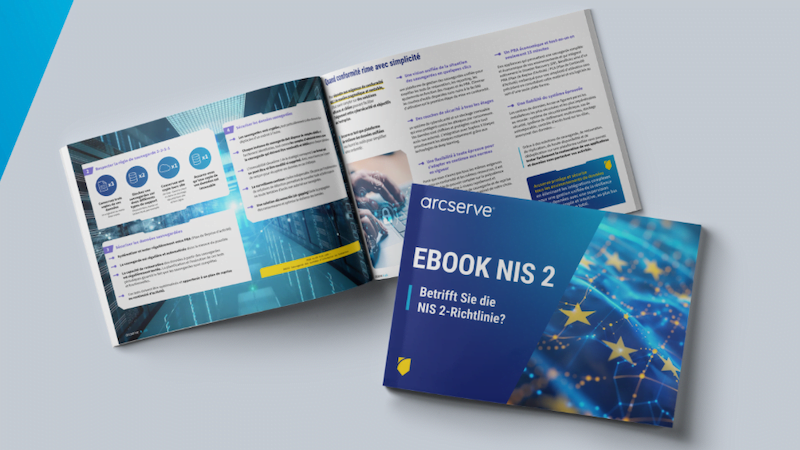
The NIS2 directive is the next administrative and bureaucratic monster for companies within the EU. By October 2024, affected companies must meet the requirements for more cyber hygiene and data security under NIS2. But many feel mercilessly overwhelmed by the directive. In this article, you will find out how you can implement the directive and how a partner like Arcserve can help you.
The NIS2 Directive: Implementation by October 2024
As the world becomes increasingly digital, recent disasters of any kind have shown one thing: digital infrastructure is both important and vulnerable. To maintain business continuity within the EU, cyber hygiene and data protection are essential.
All EU member states must have implemented the NIS2 Directive into national law by October 2024 at the latest. This means that companies within the EU must also meet the requirements of the directive, which succeeds the previous NIS Directive.
The main objective of the NIS2 Directive is to ensure cooperation between EU Member States to improve cybersecurity, provide better protection for more organizations and industries, establish a unified system for reporting cybersecurity incidents and crisis management, and strengthen security in the deployment and fight against new cyber threats. Companies must implement and comply with the NIS2 Directive in a total of 10 areas.
4 steps to implementing the NIS2 Directive
The professionals at Arcserve divide the implementation of the NIS2 directive into four stages.
1. Planning and integrating a robust backup strategy
First, you should think about the critical data and systems in your company. You should back up important data more frequently. At the same time, the SaaS environment should also be secured and a recovery procedure for IT implemented.
2. Follow the 3-2-1-1 rule
This rule states that you should create 3 copies of your data and save these backups on 2 different media (e.g. hard drive, NAS, etc.). 1 copy should be stored externally. The data is stored in 1 other copy in an unalterable manner.
3. Securing backups
Backups should be performed regularly and automatically. You should also test them regularly to ensure that a recovery can be carried out if necessary.
4. Make backups
Backups should be secured accordingly. This means, for example, a separate account for each backup. This also includes continuous monitoring of the backups and encryption of the backups during transfer.
Arcserve supports NIS2 implementation
Many companies are understandably overwhelmed by this issue. They fear high costs and immense additional workloads due to the implementation of the directive or are already unable to manage the implementation. A reliable partner such as Arcserve offers suitable tools for cyber hygiene and data protection at fair prices that are suitable for meeting the NIS2 requirements.
With Arcserve, you can create a uniform and clear representation of your backup situation, protect your data and systems across multiple levels and still remain flexible. Arcserve offers cost-effective and comprehensive solutions that will help you meet the challenge of the NIS2 directive. You can get an initial overview with Arcserve's free e-book.
To the free e-book
Source: https://www.basicthinking.de/blog/2024/07/31/cyberhygiene-und-datensicherung-nach-nis2-arcserve/


